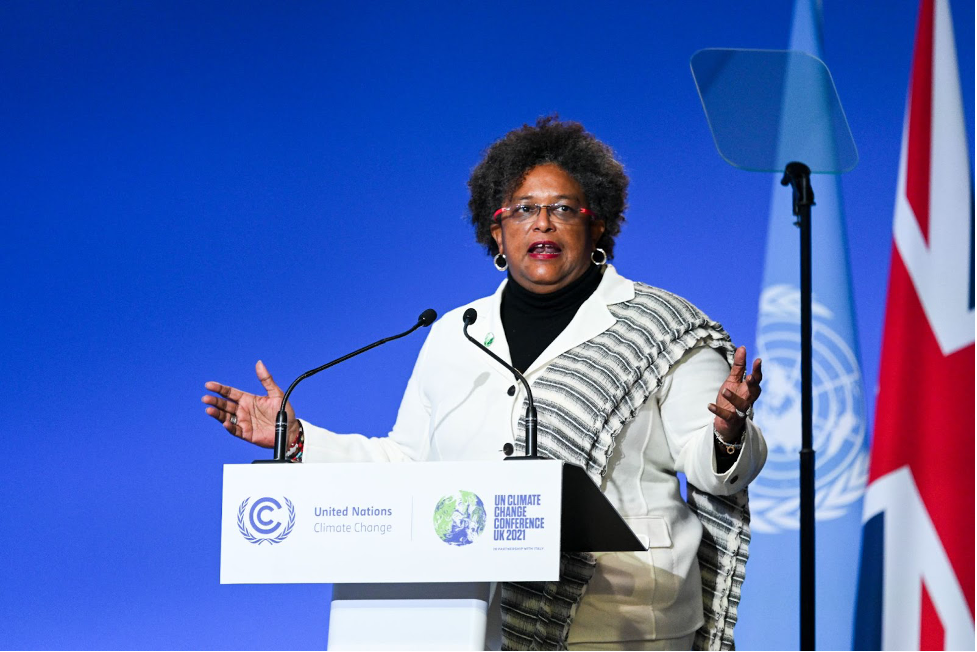Loss and damage was a central topic of discussion at COP26, particularly amongst developing nations. Loss and damage refers to the harm caused by climate change on the natural environment (such as sea-level rise) and the human impacts (like migration driven by climate change and loss of livelihoods). The topic of loss and damage has proven to be increasingly urgent. Between 2000 and 2019 there were 6,681 recorded climate-related disasters that impacted 3.9 billion people, compared to 3,656 disaster events between 1980 and 1999 (UNDRR, 2020). Unfortunately, decision-making on the topic of loss and damage has been contentious because of the inequality between which countries emit the most and which countries are subjected to the most severe effects of climate change. As illustrated by the chart from Oxfam below, the poorest half of the global population is only responsible for about 10% of global emissions, while the wealthiest 10% are responsible for a cumulative 50% of global emissions (Gore, 2015), and yet poor nations that emit the least remain the most vulnerable to climate change. Not only are the causes and effects of loss damages unequal, but the COP event itself was well, which further impacted how conversations played out. Vaccine inequality, COVID-19 travel restrictions, and the overall cost of travel disproportionately affected delegates from poor countries–who were certainly the main advocates for the prioritization of loss and damage in comparison with delegates from wealthy countries.
One of the most compelling speeches at COP26 was delivered by the Prime Minister of Barbados, Mia Mottley. Prime Minister Mottley addressed the three major gaps where more action is needed in order to deliver on the promises from the Paris Agreement–mitigation, adaptation, and loss and damages. In regards to loss and damages, she said
“Climate finance to frontline small island developing states declined by 25% in 2019. Failure to provide this critical finance and that of loss and damage is measured, my friends, in lives and livelihoods in our communities. This is immoral, and it is unjust.”
Despite these powerful words and efforts from vulnerable nations, still no direct funding mechanism was established for loss and damages. However, the Glasgow deal did make progress in operationalizing the Santiago Network, which will connect vulnerable nations with governments, institutions, and organizations that can provide providers of technological, financial, or other assistance, in averting, minimizing and addressing loss and damage. This agreement and action at COP26 was necessary but inadequate in terms of meeting the needs of vulnerable countries as they deal with the ramifications of climate change.

The agreement on the Santiago Network mirrors the struggles that occurred throughout COP26 negotiations as developing nations urged the developed world to make good their mitigation and financial promises and the developed world continued to come up short, while relying on technological solutions to combat climate change. According to the Climate Action Tracker (2021) even if all the announced net-zero commitments or other targets are implemented, warming would reach 1.8°C by 2100, surpassing the goal of 1.5°C. Despite the original goal of delivering 100 billion per year in climate finance from the developed world by 2020, this goal will only seemingly be met by 2023. Several developed countries continued to reference carbon capture and storage in their mitigation plans despite the fact that this technology does not exist at the scale necessary to mitigate global emissions. Despite these shortcomings from the developed world, the developing world continued to use COP26 as a platform to make the case for the importance of loss and damages. During the meeting of the Climate Vulnerable Forum (a meeting of about 50 countries), delegates from many vulnerable countries, and from small island nations in particular, spoke about how climate change is directly affecting their people and their land. The Dhaka-Glasgow Declaration, adopted by the Climate Vulnerable Forum, set forth the key priorities vulnerable nations wanted to see more progress on at COP26. One of these main priorities was loss and damages. The Dhaka-Glasgow Declaration called for loss and damage to become a standing agenda item at future COP events and urged for the developed world to make loss and damage a higher priority.
What needs to happen next in terms of addressing loss and damages? The most important piece missing from COP26 was a clear funding mechanism dedicated to loss and damages. Although loss and damage came up frequently as a topic, other than agreeing to continue the dialogue and build mechanisms to provide technological support, little was actually agreed upon. The concern however, is that the developed world has failed to provide the 100 billion dollars per year of climate finance by 2020, so opening up an entirely new funding stream dedicated to loss and damage is sure to be an uphill battle. More still, a significant proportion of that 100 billion is dedicated to mitigation rather than adaptation, so until problems around adaptation funding are solved, we are unlikely to see much progress on loss and damages funding.
References:
Gore, T. (2015). Extreme Carbon Inequality: Why the Paris climate deal must put the poorest, lowest emitting and most vulnerable people first. In: Oxfam International.
Climate Action Tracker (2021). Warming projections global update. Climate Analytics and New Climate Institute, May.
UNDRR. (2020). Human Cost of Disasters: An Overview of the Last 20 Years 2000-2019. UN Office for Disaster Risk Reduction. https://books.google.ie/books?id=YxcOEAAAQBAJ
More Information: